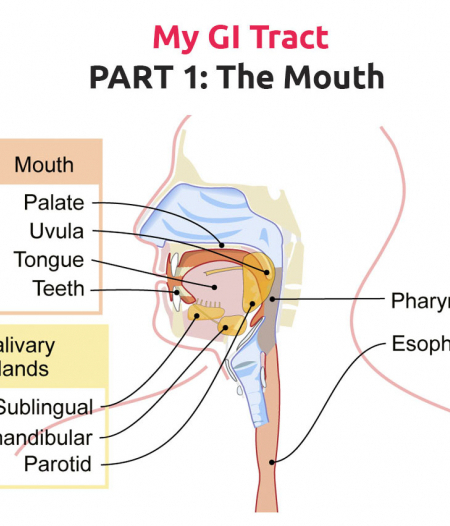Journey Through The GI Tract PART 1: The Mouth

Following on from our last blog on the ‘My GI Tract’ series, let’s begin our journey by diving into the depths of the GI tract, delving into the workings of the oral cavities. We shall learn how this part of this tract aids digestion.
The 1st part of the GI tract and its function: The Mouth
Wouldn’t you agree that eating is by far the most enjoyable part of the digestive process?
The digestive process begins even before you bite into your food. The mouth is the beginning of the digestive tract and encounters all the delicious foods and drinks that you offer it. It receives the food, tastes it and breaks it up into small, easy-to-swallow pieces.
Salivary glands
Your partner offers you some fruit. Anticipating a juicy orange, the sweet aroma entices you to take a bite and glands in your mouth start to get active. That’s why your mouth waters at the sight of food. It begins to produce saliva — a mixture of secretions that help lubricate and break down food. Besides having salivary glands in the lining of your mouth, you have three pairs of larger salivary glands — the parotid, sublingual and submandibular glands.
“The salivary glands in your mouth secrete between 1 and 1.5 litres of saliva daily.”
Once you start eating, chewing (mastication) enables the food to be cut into pieces that are more easily digestible. Saliva is also produced with the chewing motion. Your saliva mixes with the food to begin to break it down into a form your body can absorb and use. It moistens and lubricates food, and turns the food into a moist lump called the bolus, making it easier to swallow.
Enzymes present in the saliva break down any starch
The salivary glands in your mouth secrete saliva, which is rich in the digestive enzyme amylase. Salivary amylase breaks apart starches into two-chain sugars called maltose. This simple sugar is later broken down further into single glucose molecules that can be used as cellular energy.
The tongue
The movement of the tongue is also important in the digestive process. After your food is chewed and mixed with saliva, it is ready to be swallowed. The tongue guides the bolus to the back of the throat. As you swallow, your tongue passes the food into your throat (pharynx) and into your oesophagus.
Tune in next time, as we explore the oesophagus and how it aids digestion.
To find out about how to keep your digestive system working effectively, and to book your appointment, get in touch with us now.
